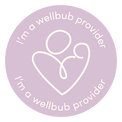AuthorJanel Briggs Categories
All
|
Back to Blog
Our minds are powerful and valuable, but they can be tricky to master when situational anxiety flares up. Some people find they thrive in new experiences and love meeting new people. If you are one of those people, my hat goes off to you! Like many others, embracing the new is something I have had to learn how to love. If you’ve ever tried to support a loved one with anxiety, you’ll know that new events and situations where they are standing an abyss of so many unknown’s and all the uncertainty their fear can be debilitating. When it begins to unfold in front of us it’s like the person is fighting a battle we can’t see. We don’t exactly know what to do, or how to fix it. We want our loved one to listen to reason and be OK. But their fear can be so convincing that they believe something (everything!) bad is going to happen. As a Mindset Coach I want to share with you a proactive tool to help you to help them deescalate the situation, using a concept called reframing fear to excitement. REFRAME FEAR - TO - EXCITEMENT This tool will help your loved one calm the mind and move forward feeling more excited and confident. 1. Listen for the core language of anxiety. Words can be your guide to understanding when a person’s fear starting to building. A tell-tale sign is: WHAT IF (a bad thing happens)? WHAT IF (a negative outcome)? WHAT IF (resistance language "I can't") OR when you hear the person worst case scenario planning. (plan A, B, C, D) 2. Immediately get them to stop and ask them to take a breath. This will halt the mind bringing their awareness back into the body, and circumvent the thought process. 3. Reframe their language. This may take a little practice but start by repeating their “What IF” statement BUT instead of a bad ending you insert a good, or happy ending for them. Shifting the mindset to a positive outcome. “What IF it all turns out better than you could imagine? 4. Make the “unknown” known. Anxiety often sparks due to a fear of the unknown or uncertainty. Ask yourself and affirm what is known. What do we know about this situation? What can we be certain of? What is within our control. 5. Help them to understand that anxiety and excitement have the same vibrational feeling in the body. “You must excited? Imagine all the cool people you are going to meet, and all the fun you will have. Those butterfly’s show up when you get excited right?” 6. Reaffirm the excitement and positive outcome. “I am excited for you! This is going to be so fun. You’ll have a great time. Everyone will love meeting you, you have so much to offer.” EXAMPLE OF THIS TECHNIQUE IN ACTION:Recently, my almost 10yo son joined a new activity after school in Singapore with a group of kids that were older than him on a subject he was lacking in confidence. Even though he originally said he wanted to do this activity, the day of the first group event was looming, and he was beginning to drag his heels saying he no longer wanted to go. I get it, kids making friends and meeting new people can be overwhelming. But as a family we decided a long time ago to always make an effort to give it 1 chance. Then we can decide after that whether we keep it or ditch it. Usually, we keep it – as we are not in the habit of letting our fear of the unknown rule our lives anymore. In the car on the way to there, I could see his mind start to tick, tick, tick. He began to ask:
Immediately I knew as soon as he said “WHAT IF” this was fear talking, not his rational mind. His core language trigger to me was the phrase “What IF” followed by a resistance word (don’t, can’t) and a negative outcome. I could hear his anxiety building and this was a great opportunity to help him de-escalate the fear. I asked him to stop right there and take a breath. We took a big deep breath together. I then proceeded to use the power of positive language to reframe and shift his mind from the most terrible outcome he is imaging, to a good ending. I repeated his “What IF” back to him with a positive outcome:
I then helped him to make the “unknown” known by focusing on a previous experience.
I reminded him that fear and excitement have the same vibrational feeling of alarm in the body. “You must be feeling those excited butterflies in your tummy again. Excited butterflies come when we do fun and exciting things right?” We walked into the building and up the escalator into the activity room, we took the long way to get there - moving the body is very helpful to release stress hormones. We arrived and he turned to me and said “Mum, I am excited about this 😊”. I said, “Yes buddy, I am excited for you too – this is going to be so much fun!”. And it was fun, he had a blast. We pre-framed it to be a good experience. I picked him up an hour later and he raved about the activity and everyone in it. He smashed the activity and cannot wait to go again. We pre-empted for a good ending and primed his mind for fun. He could now feel the excitement buzzing withing his body INSTEAD of the fear. The entire process took us 5 minutes. You can absolutely do this too! With children AND adults. It’s so easy to allow fear to jump into the driver seat and take control of new situations where there are so many unknowns. But every time we do, fear wins. It takes our mind away from the joy and the fun of living in the present moment. When we treat our loved ones who struggle with anxiety with a level of compassion that also takes positive action we can begin to help them to learn how to bring their own anxiety alarm down and enjoy new experiences for what they are, FUN. I hope these suggestions help you support a loved one with anxiety. If you have any questions or comments, please reach out. If you or someone you know is sick of struggling with their anxiety I run a program called “Freedom from Anxiety” for women who are ready to feel more carefree and confident in all areas of their life. To learn more about Janel's Freedom from Anxiety Program 1:1 Coaching head here.  About the Author: Janel Briggs is a NLP and Timeline Therapy Practitioner on a mission to support women across Australia and Singapore in healing their professional anxieties, insecurities and imposter syndrome to build unwavering confidence and self-belief. The goal is to level up your life and career by learning how to to live fearless and anxiety free! Connect with Janel on social media via Linkedin or Instagram.
0 Comments
read more
Your comment will be posted after it is approved.
Leave a Reply. |
|
Stay Connected
Subscribe and be the first to access new blog content news & updates. |

 RSS Feed
RSS Feed





